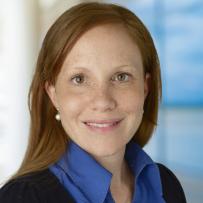Taking Action on Wastewater Treatment Process Emissions
By Amanda Lake

At Jacobs, we recognize that the intertwined climate, biodiversity and societal crises are top of the list in terms of the risks facing us all. With our OneWater mindset, we understand the need for a long, hard, systems-inspired look at the urban water cycle and how we recover resources within water resource recovery facilities (WRRFs). This means going beyond end of pipe thinking, and looking upstream into catchments, into nature-based solutions as well as thinking about what else we release when we produce recycled water. The unfortunate fact is that we produce a lot of greenhouse gases: the water sector typically comprises at least 2% of national emissions, and we’re very likely underestimating that figure.
Nitrous oxide (N2O) emissions and methane emissions – termed ‘process emissions’ – are key here. They are produced when we store, convey, treat and release reclaimed water from our WRRFs. Once you realize how critical these emissions are to facility carbon footprints – particularly as we decarbonize electricity – then you have to take a dive deep into the topic.
In some ways it’s simple – a proportion of the nitrogen in our wastewater (largely from the protein we eat) gets converted into nitrous oxide. However, it’s complex and the academic research continues to improve understanding of the pathways for N2O production, causation, molecular insights and more. The real secret though is that we know enough to measure and mitigate these emissions today. We may lack the policy drivers, and there are still plenty of questions, but we know enough to act. Given the seriousness of climate crisis and the fact that, in some geographies, these emissions already comprise up to 90% of our WRRF greenhouse gas footprints, surely now is the time to act as professionals and as a global water sector!
That’s why at Jacobs we’ve worked at all levels for the past few years to do just this – from advising national inventory reporting work with regulators and policy makers to supporting facility-level nitrous oxide and methane campaign design and implementation to physically installing and maintaining measurement kits with our own field services teams in the U.K. and U.S.
Working with some of the most progressive utilities, research institutes and startups in this space has yielded great insights. We’ve put just as much effort into sharing the practical utility progress on process emissions that is out there – for instance, co-founding the U.K. and Irish Community of Practice for Process Emissions. Our team have shown incredible leadership in this space too in their voluntary commitments – hosting masterclass and webinar series and even supporting the start of the 7th annual reporting IPCC cycle earlier this year at the Water and Climate Change Inter-dependencies workshop at the Bonn Climate Conference in order to assist Parties to the UNFCCC and the Paris Agreement.
Once the data on these process emissions starts flowing – the fun (and, most importantly, the mitigation) really begins! That involves working with process engineers, technologists, data scientists and operational teams to piece together the puzzle of where and why we’re producing emissions such that we can take action to prevent them. We see increased and reduced N2O emissions with operational conditions, influenced also by design features of WRRFs. The challenge now is to work with our most progressive clients to take intentional action to reduce emissions today.
The good news is there are plenty of solutions already. The opportunity is to apply them and ensure we take a process emissions lens to all our WRRF work – working with our clients to optimize, design and maintain resilient, climate-smart assets. While the evidence shows we can minimize these emissions through simple and more complex controls, we can’t get to zero with the technologies we have. Here it’s about innovation – with some really interesting projects in play that we’re proud to be part of – and collaborative work to find WRRF solutions that may avoid or reduce N2O in particular.
This innovation and collaboration is set to continue at WEFTEC this year, where we’re leading workshops on both nitrous oxide and methane as well as wider GHG accounting for utilities. We’re watching our carbon miles but this topic requires global collaboration and there are few places better than industry events like WEFTEC to make that happen. Please look out for our team and you can also view our full Jacobs program here. We hope to see you in Chicago!
About the author

Amanda Lake is Head of Carbon and Circular Economy in Jacobs’ Water Europe business. She has worked in the water sector for the past 20 years, originally in Australia and now based in Edinburgh, Scotland. A chartered chemical engineer, Amanda leads a process engineering team of 50 people working across European and global projects in the design, construction and commissioning of water process projects across the urban water cycle. With a background in sustainability and circular economy, and passion to see climate action at the pace required, Amanda has pivoted her focus to lead strategic and practical work in the areas of process emissions and carbon assessment.












































